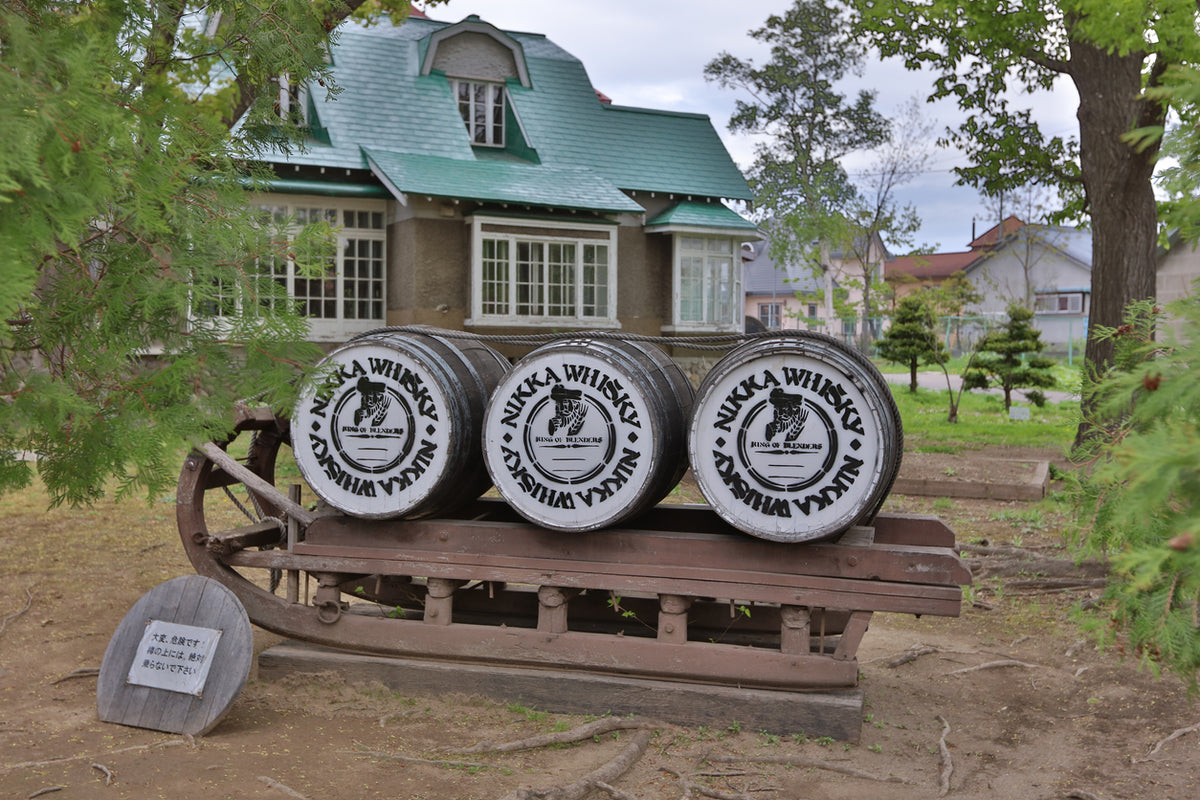The rise of Japanese whisky

Japanese whisky has exploded onto the scene in the last decade or so, and as you sip on a wonderful Japanese malt from Nikka this month, it's about time we delved a little deeper into the burgeoning category.
Mention Japanese whisky, and it’s highly likely that you’ll hear the words ‘Suntory’ or ‘Nikka’ reverberating around the room. Generally, these two brands are credited with the birth of the category, and their stories are totally intertwined. How, you ask? Let me take you back to the 1920s.
It was at this time that Masataka Taketsuru, founder of Nikka (and who this month’s whisky, Taketsuru Pure Malt, is named after) was studying in Scotland, where he became enamoured with the art of Scotch whisky-making, even working in renowned distilleries like Hazelburn. He returned to Japan in 1923 full of knowledge, and was recruited by Shinjiro Torii, founder of Suntory. Together they set up Suntory’s (and indeed, Japan’s) first whisky distillery, Yamazaki. It wasn’t plain sailing, and the first release was deemed too smoky for Japanese palates. As the story goes, Torii wanted to create something more commercially successful, but Taketsuru wanted to stay true to what he’d learned in Scotland.
After a decade of partnership, Taketsuru went his own way, and in 1934 founded Nikka (though it was initially called Dai Nippon Kaju) along with the Yoichi distillery. He set his sights on Hokkaido, a northern island and prefecture, because of its similarities with the Scottish climate. The first Nikka whisky was released in 1940, and the second Miyagikyo distillery was founded in 1969, producing unpeated whiskies as a balance to Yoichi.
So, that’s a brief history behind the two founding fathers of Japanese whisky. But while much of the knowledge may have initially been brought over from Scotland, the category is anything but an imitation. The use of native Japanese mizunara oak to finish whiskies brings a distinctive character, while the nation’s thirst for Highballs has also determined its traditionally lighter style of whisky (with an emphasis on blends, which work wonderfully in the cocktail).
It was only in the early 2000s that Japanese whisky began to be recognised outside of Japan itself – in 2001 Nikka's 10 year old Yoichi single malt was awarded "Best of the Best" by Whisky Magazine, and it wasn’t until 2004 that Yamazaki was introduced to the USA. That set the category off and it gained some serious momentum, scooping awards left, right and centre. Suddenly, Japanese whisky was hot stuff.
Age-statement Japanese whiskies are now like gold dust, and have all but disappeared in the last five years or so. If you can find one, its price tag will likely make your eyes water. In fact, even the no-age-statement Taketsuru Pure Malt was discontinued earlier this year – that’s sure to make you savour each sip! It’s not all doom and gloom though, and because of increased demand distilleries are working at full capacity to deliver the goods. We might just have to wait a while for a decent age statement…
Any favourite Japanese whiskies that you’ve tried, or perhaps you’ve got a few on your bucket list? Let us know!
Until next time,
Jess 🥃



